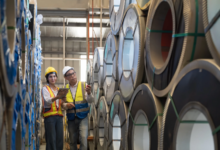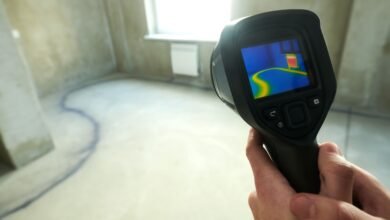Understanding Forensic Litigation Support Services: How Science Solves Structural Failure

Structural failures, whether they occur in buildings, bridges, or other engineered structures, can have devastating consequences. These failures not only pose significant safety risks but also often lead to complex legal disputes. In such cases, forensic litigation support services play a crucial role in uncovering the causes of failure and providing scientific evidence to support legal proceedings. This article delves into the intricacies of forensic litigation support and how science is applied to solve structural failures.
What Are Forensic Litigation Support Services?
Forensic litigation support services involve the application of scientific and engineering principles to investigate incidents, particularly those leading to legal disputes. These services are provided by experts who specialize in forensic engineering, a field that focuses on the analysis of structural failures, accidents, and other events where technical expertise is required to determine the cause.
Forensic litigation support services encompass a wide range of activities, including:
- Investigative Analysis: Conducting thorough investigations to determine the root cause of structural failures. This involves examining the design, materials, construction processes, and environmental factors that may have contributed to the incident.
- Expert Testimony: Providing expert opinions and testimony in court, arbitration, or mediation. Forensic engineers present their findings in a clear and concise manner, helping legal professionals and juries understand the technical aspects of the case.
- Evidence Collection and Preservation: Gathering and preserving physical evidence from the site of the failure. This may include collecting samples, documenting the condition of the structure, and using advanced technologies like 3D scanning to create accurate representations of the scene.
- Report Preparation: Preparing detailed reports that outline the findings of the investigation. These reports are often used in legal proceedings to support claims or defenses.
- Litigation Support: Assisting legal teams with technical aspects of the case, such as reviewing documents, analyzing opposing expert reports, and advising on technical strategy.
The Science Behind Structural Failure Investigations
When structural failures occur, understanding the underlying causes requires a multidisciplinary approach that draws on various fields of science and engineering. Forensic engineers use a combination of methods and tools to analyze failures and provide scientifically sound conclusions. Here’s how science plays a role in solving structural failures:
- Material Science
One of the key areas of focus in forensic investigations is the study of materials used in construction. Material science involves analyzing the properties and behavior of materials under different conditions. Forensic engineers examine whether the materials used in a structure met the required specifications and whether they were suitable for the intended application.
Common material-related issues that can lead to structural failure include:
- Corrosion: The deterioration of materials, particularly metals, due to environmental exposure. Corrosion can weaken structural components, leading to failure.
- Fatigue: The weakening of materials over time due to repeated stress cycles. This is often seen in bridges and other structures subjected to dynamic loads.
- Defective Materials: Materials that do not meet quality standards, either due to manufacturing defects or improper selection.
By analyzing the materials, forensic engineers can determine whether they contributed to the failure and, if so, how.
- Structural Analysis
Structural analysis is the process of evaluating a structure’s ability to withstand loads and forces. Forensic engineers use advanced computational methods and software to model the behavior of structures under various conditions. This analysis helps determine whether the design of the structure was adequate and if it complied with relevant codes and standards.
Structural analysis can reveal issues such as:
- Design Flaws: Errors or omissions in the design that compromise the structure’s integrity.
- Overloading: Situations where the structure was subjected to loads beyond its design capacity, leading to failure.
- Foundation Problems: Issues with the foundation that caused uneven settling or instability.
By recreating the conditions leading up to the failure, forensic engineers can identify the exact point of failure and its cause.
- Environmental Factors
Environmental conditions often play a significant role in structural failures. Forensic engineers consider factors such as temperature, humidity, wind, and seismic activity when investigating failures. These environmental conditions can affect materials and structures in various ways, leading to issues such as:
- Thermal Expansion and Contraction: Temperature changes can cause materials to expand and contract, leading to cracking or warping.
- Moisture Intrusion: Water infiltration can weaken materials and cause deterioration, particularly in concrete and masonry structures.
- Seismic Activity: Earthquakes and ground vibrations can exert forces on structures that they were not designed to withstand.
By analyzing environmental data, forensic engineers can determine whether external factors contributed to the failure.
- Failure Mode and Effects Analysis (FMEA)
Failure Mode and Effects Analysis (FMEA) is a systematic approach used to identify potential failure modes and their causes. In forensic investigations, FMEA helps engineers assess the likelihood of different failure scenarios and their potential impact on the structure.
The FMEA process involves:
- Identifying Failure Modes: Determining the different ways in which a structure could fail, such as cracking, buckling, or collapsing.
- Assessing Causes: Identifying the root causes of each failure mode, such as design flaws, material defects, or environmental factors.
- Evaluating Consequences: Assessing the potential consequences of each failure mode on the structure and its occupants.
FMEA provides a comprehensive understanding of the risks associated with a structure and helps forensic engineers pinpoint the most likely cause of failure.
Read more: How to Care for and Maintain Your SUP Board
Case Studies: Real-World Applications of Forensic Litigation Support Services
To illustrate the importance of forensic litigation support services, let’s look at a couple of real-world case studies where these services played a critical role in solving structural failures:
- Bridge Collapse Investigation
In a high-profile case involving the collapse of a highway bridge, forensic engineers were called upon to investigate the cause of the failure. The investigation revealed that a combination of design flaws and material fatigue led to the collapse. The forensic engineers provided expert testimony in court, which was instrumental in determining liability and ensuring that similar failures could be prevented in the future.
- Building Facade Failure
In another case, the facade of a high-rise building failed, causing debris to fall onto the street below. Forensic engineers conducted a detailed analysis of the materials used in the facade and the construction methods employed. The investigation uncovered that improper installation and the use of substandard materials were to blame. The findings were used in legal proceedings to support the claims of the affected parties.
Conclusion
Forensic litigation support services are essential in the aftermath of structural failures, providing the scientific expertise needed to uncover the truth and support legal claims. By applying principles from material science, structural analysis, environmental studies, and failure mode analysis, forensic engineers can solve complex failures and provide crucial insights into how and why they occurred.
Whether it’s determining the cause of a bridge collapse or identifying the factors leading to a building facade failure, forensic litigation support services play a vital role in ensuring that justice is served and future failures are prevented. As the complexity of modern structures continues to grow, the importance of these services in resolving disputes and safeguarding public safety cannot be overstated.





